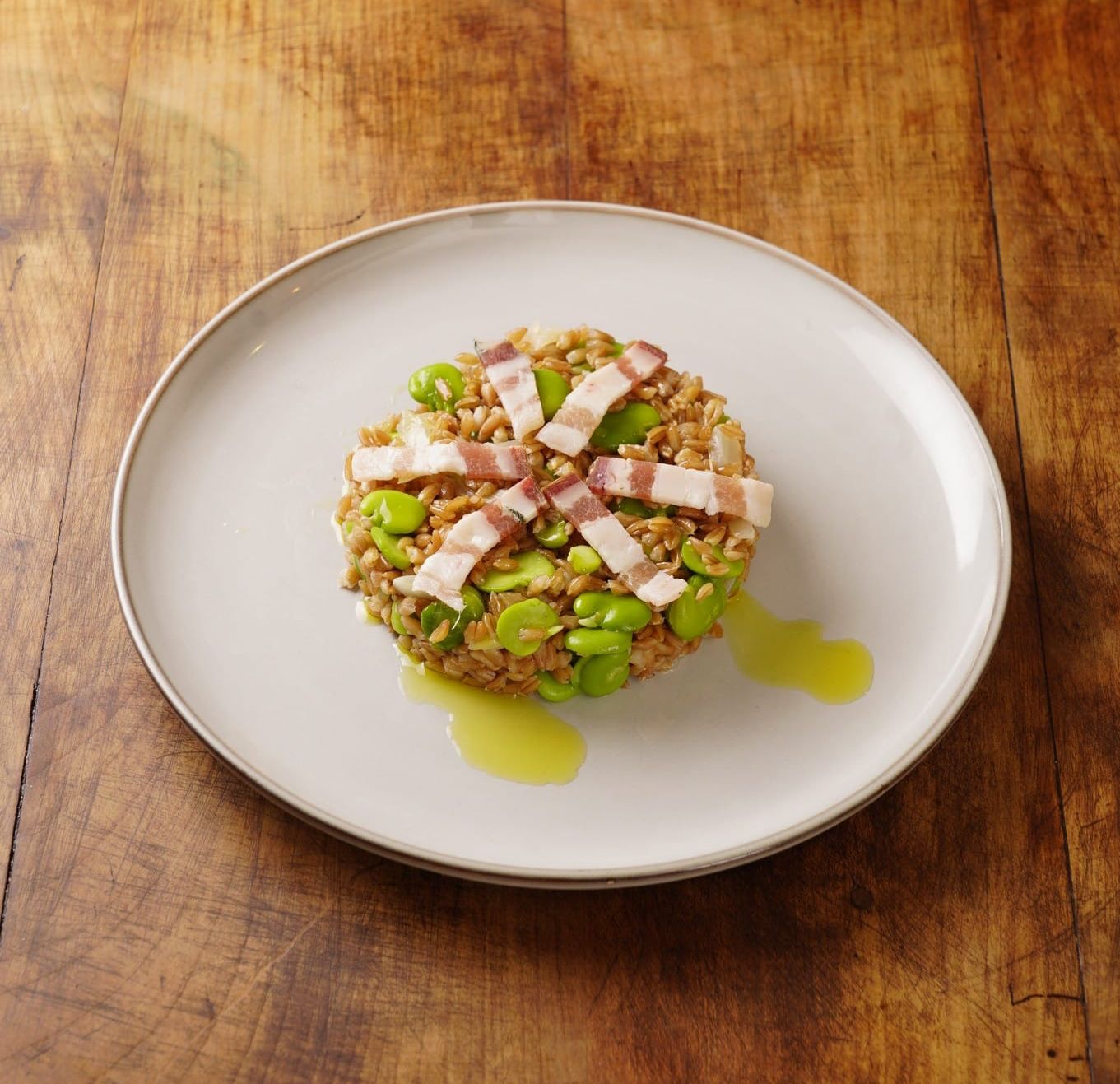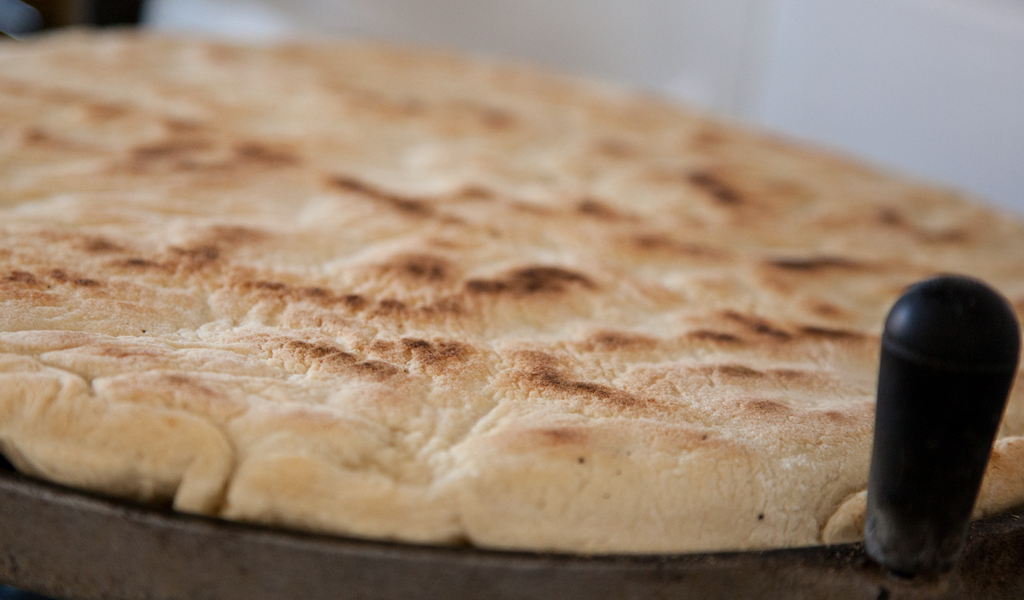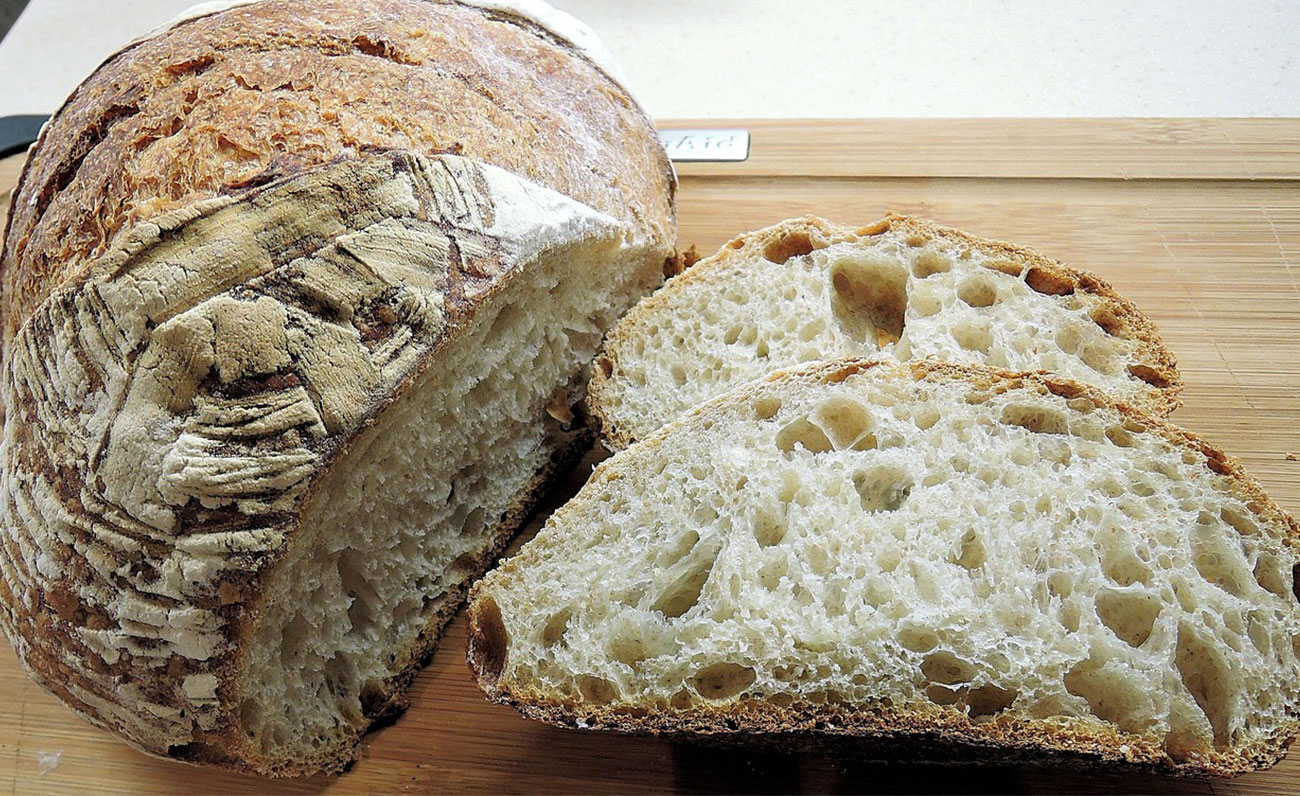The archaeologist and archaeogastronomy recovers ancient recipes and dishes from Mesopotamia to the Middle Ages.
What did the Romans eat? What was served in the Middle Ages? What are the dishes that have resisted the passage of time? With Professor Paolo Braconi – archaeologist, archaeogastronomer and former professor (now retired) at the University of Perugia, where he taught Roman Antiquities and History of Agriculture and Food – we tried to answer these questions with a fascinating and insightful conversation, where there was no shortage of curiosities and twists. Because history and culture also pass through the table!

The professor boasts more than 60 excavation campaigns, both in Italy and abroad; he directed the excavation of the Villa of Pliny the Younger in San Giustino, the archaeological research on the sites of Roman Tadinum (Gualdo Tadino), at the Monastery of San Secondo on Isola Polvese and on the Roman-Sabine site of Villa San Silvestro di Cascia. With the archaeochef and restaurateur Marino Marini he created ArcheoFood, a gastronomic and historical project to rediscover dishes, recipes and flavours from thousands of years ago, but adapted to today’s palates. “The idea of ŌĆŗŌĆŗcertain dishes and certain combinations is important and must be saved. Not so much the flavour, which can never be like the original”.
Let’s clarify immediately: what is an archaeogastronomer? As an archaeologist why did you choose to also focus on cuisine?
I am an archaeologist and then, teaching History of Agriculture and Food at the University of Perugia, I specialized in these areas through archaeological sources. It was the first step. Furthermore, I began to study ancient cuisine: this is how the curiosity to experiment and taste foods from the past was born, not only study and analyze them from a literary or archaeological point of view. I also involved the students in all this.
Is this where ArcheoFood comes from?
Yes. With my friend, a chef and cooking enthusiast, Marino Marini, and with the collaboration of the Universit├Ā dei Sapori, the idea of ŌĆŗŌĆŗcreating a historical cooking laboratory every year was born. We went back to Mesopotamia, to then move on to the Roman and medieval periods. In short, we began to range over different eras. This is how the ArcheoFood brand was born, which however has not had much commercial success so far.
What are the dishes that you have “brought back to life”?
A good number have been recovered. I am thinking of the project dedicated to ancient must or cooked must, that is, mustard mustard (cooked must which is the origin of the word mustard). We have brought back to life dozens of gastronomic products prepared with concentrated musts of Sagrantino and Trebbiano Spoletino. Or the farciccia: a sausage made of spelt, pork and almonds described in the famous Roman gastronomy treatise De re coquinaria by Apicius (first century AD). It was a product that was very successful during tastings. Now I am in another operational phase and I am editing a book of ancient Roman recipes for museums and archaeological parks: I suggest a proposal of fresh broad beans cooked with pork lard (fabae cum larido), typical of the calends fabatae – a celebration that linked the first of May to the goddess Carna – which we combine with risotto spelt and pecorino.

What period do the recipes you made date back to?
They come from the Roman world and are almost all from the early imperial age, they are recipes by Apicius essentially, some are by Columella: we are in the first century AD but not only. Following the Yale culinary tablets – the oldest recipes in the world, we are in the second millennium BC – which come from Babylon, we have experimented with red turnip stew, mutton and a whole series of decidedly interesting dishes. Then of course there is the Middle Ages, there it is more fun because there are many recipe books, starting from the Liber de coquina.
Are there ancient dishes that have the same flavor as in the past?
The answer I can give you instinctively is, no. I’ll explain. Everything has changed, even bread. Of course the basic dishes like a piece of meat thrown on the grill or a fried egg, have not changed, but we are talking about food and not cooking. Yet, if one wanted to be strictly philological, it would be necessary to say that the change has also occurred in that case: today’s chickens eat corn that was not available in ancient times and, moreover, animal breeds are modified. Not to mention the genetic modifications made to the plant world. Perhaps the flavor of raw materials most similar to the past may be that of wild animals and plants, provided that they have not consumed nutrients altered by man.
He said that even bread has changed…
Yes, not only complex bread, but also bread made with flour and water because today’s wheat has a genetics that are totally distorted compared to ancient grains. Even water itself is different if you don’t use uncontaminated water (if it ever really existed).
So there is no recovery of flavors, it is only the recovery of the dish?
Our philosophy is not based on philological obstinacy, I think this would be unfair. I think, instead, that the reconstruction of historical cuisine must respect the passage of time. Let me explain. An ancient dish that has been passed down through a cookbook has gone down in history because it was obviously good, no one writes disgusting recipes. Let’s start from the assumption that what has come down to us has been codified because it was considered appetizing for the time; however, if today it disgusts me, I betray its nature. A dish must be able to adapt to the current palate so as to remain good and pleasant as it once was. So I take the idea of ŌĆŗŌĆŗthe time and transform it, adapt it and renew it based on contemporary taste. For example, the farro sausage, pork, almonds, pine nuts and fish sauce that we prepared, if we had kept the amount of fish sauce of the time it would have become a disgusting dish. I repeat, the idea is saved, the ingredients and the procedures are saved, but the flavors are recalibrated with today’s taste. Ultimately it is like a tragedy by Euripides: we cannot think of representing it as it was 2,300 years ago: we have the script, but the staging today will never be faithful to that of the time because it would have to be performed in Greek, during the day, without lights, without heating, without amplification. So we do not represent it because we cannot redo it faithfully? It must be adapted to today. The same goes for the cuisine: certain ingredients are no longer available so they must be replaced and the doses do not exist. It is the idea of ŌĆŗŌĆŗcertain dishes and certain combinations that must be saved.

As for Umbria: are there dishes that were eaten and are still eaten?
We have nothing of Umbrian cuisine in the ancient tradition, but thanks to the Eugubine Tables we know that the Umbrians (we are talking about the real Umbrians, not modern Umbria) had various types of bread and certainly ate pork, but we do not know the recipes. We know the raw materials but, how they seasoned the porchetta or how they kneaded the bread, is unknown. There is, however, a fairly unchanged and ancient dish: the torta al testo. Due to its simplicity (water and flour, cooked on a stone) every culture has made this type of bread: it does not require great preparation and does not require an oven. But however simple the recipe, as I explained, the flavor of the raw material (wheat or spelt) cannot be identical.
Was the testo used?
Yes, but the Umbrian testo, as we know it today, is a simplification of the ancient testo that originally had a more complex shape: it was a terracotta lid/bell under which the food to be cooked was placed directly on the hearth (as in the case of bread) or inside a pan (meat and fatty dishes). Burning embers were placed on top of the testo, it was a sort of oven. This type of cooking, for example, is still used in Abruzzo and is called cooking under the tile. The flat disk testo, which we use in Umbria, instead has a simple shape in which cooking takes place above and not below. At most, ash is placed on top of the cake and on top of that some burning coal that does not stick to the crust, burning it.
Are there any curiosities related to Umbrian food that come from the past?
The story of unsalted bread comes to mind, which has nothing to do with the Salt War of 1540 against Pope Paul III, despite what the people of Perugia like to say. Zachary Nowak, an American scholar and professor at the Umbria Institute, has shown that this way of preparing bread has nothing to do with the Salt War. He claims, after extensive research, that it is an invention of the Risorgimento, an urban legend of the people of Perugia. There are in fact documents that prove that bread was eaten unsalted well before the 16th century. For example, in the registers of hospitals and bakeries, the purchase of flour is recorded but not that of salt; furthermore, sources that tell of the revolt against Paul III never refer to unsalted bread. Then we must not forget that bread is an everyday food, almost sacred, and that it has such a long tradition that it seems ridiculous to think that a tax could change its preparation; even if it were, once the war was over, people would have gone back to eating it salted. Personally, I think it is a deeper historical status of the people of central Italy and a cultural factor. Unsalted bread is also eaten in Tuscany, which has nothing to do with the Pope and the Papal States, and in the Balearic Islands, a rather unsuspected place where there is certainly no lack of salt. As a Perugian, I would invite others to say why they put salt, which is an addition to the base of water and flour. The presence of salt modifies the flavor of the flour and disguises it if it has gone bad or is sour; unsalted bread instead requires impeccable flours and only those with good flours can afford it.
Do you know the period to which unsalted bread dates back?
No, but it is certainly before the Salt War.

You are retired, but does an archaeologist ever retire?
No. I tell everyone that I am retired and like all retirees I look at construction sites, but I look at the ancient ones (laughs). For example, at the moment I am doing a work on the walls of Perugia in the transition between antiquity and the Middle Ages. To do this I speak with stones, in a project that I call the archaeology of absence.
What is it about, explain to us.
I study scars, what is missing in monuments – it can also be roads. At the moment I am working on the arch of Sant’Ercolano which is not an Etruscan gate, but a hole made in the Middle Ages: it was made so well that everyone thinks it is an Etruscan gate, instead it is a medieval hole in an Etruscan wall. This is precisely “an absence” of an Etruscan wall.
Agnese Priorelli
Latest posts by Agnese Priorelli (see all)
- Paolo Braconi: «Unsalted bread is not linked to the Salt War. In Umbria it was already eaten before» - April 3, 2025
- Environmentalist Jacopo Angelini: «Our Apennines developed thanks to the monks» - February 18, 2025
- Sara Carletti: «With photography I give voice and memory to abandoned places» - January 14, 2025

